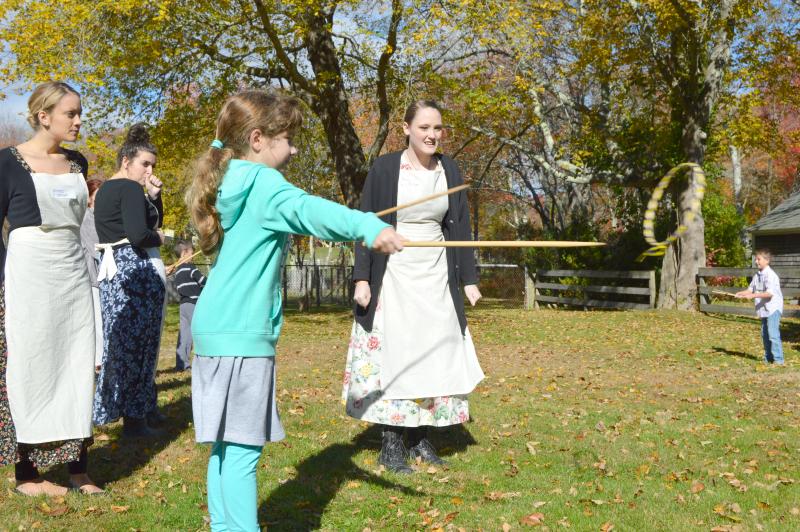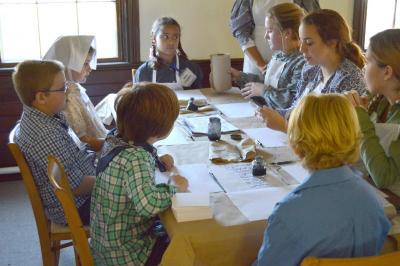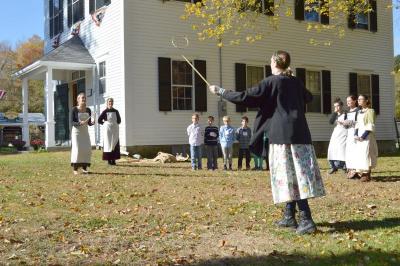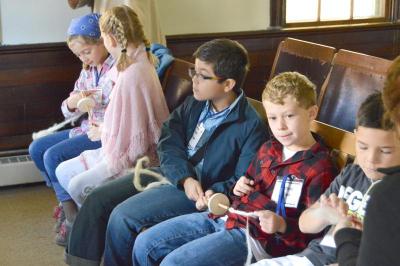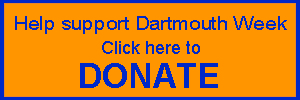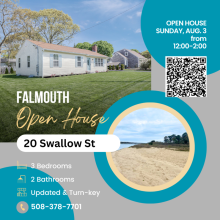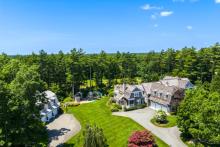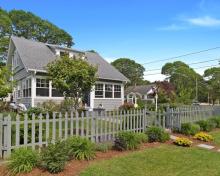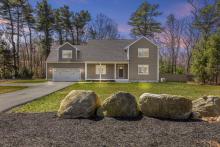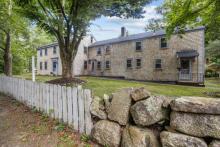Students learn from each other at Russells Mills Schoolhouse
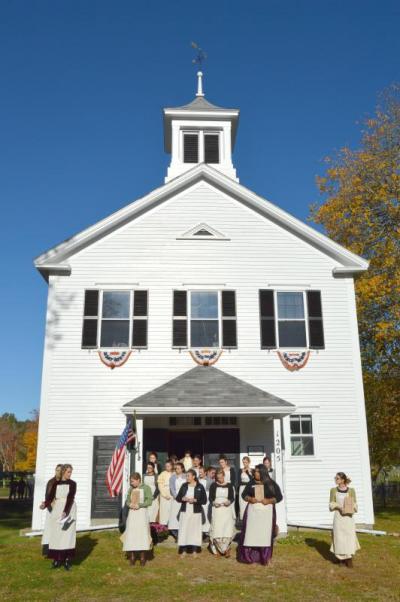
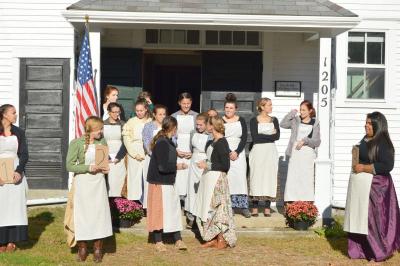
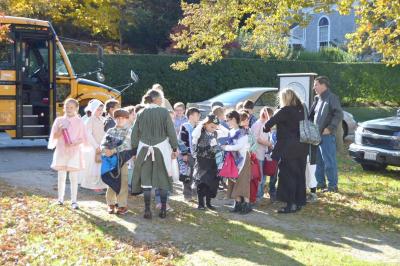
Throughout its long history, the building at 1205 Russells Mills Road has been used as a school house and a library. Today, the space has transformed into something of a collaborative learning center.
On Oct. 23, a group of third graders from DeMello Elementary visited the Russels Mills Schoolhouse to learn about life in the 1800s. While the third graders were there to learn about history, high schoolers from the early childhood education program were there to learn about teaching young children.
The field trip came together with the help of the Dartmouth Historical and Arts Society, the group that leases the building from the town.
“My high school students are in the early childhood program. They’re part of the Unified Arts Department,” said Dartmouth High School teacher Polly Guilbeault. “These students are taking a class to work with kindergartners and preschoolers at Cushman and Quinn.”
The field trip gives the high school students an opportunity to interact with an older age group.
Prior to the field trip, third graders in the district were visited by the high schoolers and by Sue Guiducci, chair of the Education Committee for the Dartmouth Historical and Arts Society. Guiducci provided students with a lesson on what to expect at the schoolhouse. The early childhood development students take the third graders on a virtual tour of town.
“My students use technology in this program. The childhood development class goes to the school and teaches about local landmarks using the Smart Board,” said Guilbeault.
She said the presentation highlights the different villages within Dartmouth and has interactive games.
During the field trip on Friday, Guiducci was in the building's second-story mock classroom, complete with desks, chalkboards and a wood stove. She and a group of high school students taught children about the various objects around the room and about the importance of leading a virtuous life through the “Five Finger Lesson,” an exercise that promotes truthfulness, honesty, punctuality, cleanliness and kindness.
On the first floor of the building, students had the opportunity to try their hand at writing with India ink and a stylus, spinning wool and playing outdoor games.
“We spend as much time as we can on this project,” said Guilbeault. “We have a tight curriculum, but we believe in this project. I think it’s worthwhile for my students to have this opportunity to instruct another age range and use their skills.”
Lauren Correia, 16, said that she and her classmates will visit Quinn Elementary or Cushman School three days a week where they have opportunities to co-teach. She said they typically will work with groups of three or four students on a lesson.
“To prepare for today, we took a class period and went over everything that we’d be discussing with the kids,” said Correia. “We went over our notecards, made points that we wanted to get across to the kids about what life would be like in school back at this time period.”
Dartmouth High’s early childhood education program is taught in three parts. The first is a methods class on childhood development theory. Then there are two practicum courses. The program results in certification to teach pre-school.
Melissa Zatir, 17 said the historical field trip helps reinforce what they’ve learned in the classroom.
“We have experience making our own lesson plan,” said Zatir. “In [the methods class], we got to create our own children’s book. This year, we’ll be reading to the children that we teach. We actually got to make lesson plans of our own, and we’ll follow that when we read our books to the children.”
Both high school students agreed that participating in the field trip helps them learn techniques to communicate with the kids and make learning interesting.
“They’re experiencing [history] firsthand, not just sitting in a classroom,” said Zatir.



